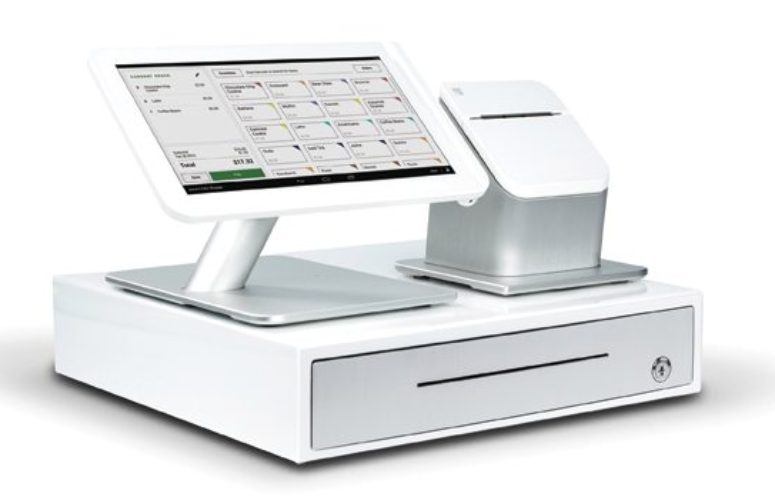
Merchant Services Milestones
Cutting-edge technology facilitates commerce, and benefits both consumers and businesses alike.
By George N. Saliba, Managing Editor On Dec 22, 2014The payment/merchant services sphere is awash in new technologies, many of them designed to increase convenience and security for consumers, as well as the financial institutions and businesses with which they interact. Apple Pay has been widely heralded, while more broadly, EMV (Europay, MasterCard and Visa) and NFC (near-field communication) technologies are expanding in scope. Against this backdrop, experts say average small businesses are now concerned about: data security, and ensuring they are not liable for fraud-related activities; understanding and reducing costs; and growing their businesses via payment/merchant services technologies. As Peter Gasparro, executive director of business development for Chase Paymentech, explains, “[Merchant Services] can be a complex business, and [client companies] are there to sell shoes, or sell shirts; they really don’t want to be bogged down with the complexity. They are looking for someone to help them navigate through this ecosystem.”
Data Security, and Reducing Rates and Fees Costs
Regarding data security, merchants must adhere to PCI (Payment Card Industry) standards and fulfill various obligations, and financial institutions can guide businesses through this process. John Zarrillo, senior vice president, business banking at PNC Bank, explains, “Bankers are increasingly talking about fraud, more than they ever talked about it, before. Even if a [business] customer doesn’t bring it up in a conversation, we’re bringing it up. We are trying to educate them about what’s going on in the marketplace. Tools and resources we have today can help educate them, and these then can be implemented to prevent [fraud] from happening at their places of business. You still have a lot of [businesses] saying, ‘It is not going to happen to me,’ or, ‘These are isolated cases.’ However, that is simply not the case. [At PNC Bank], we’re being proactive in letting them know that there’s software, information and technology available today that can help prevent circumstances at their businesses, and really save them from headaches that might happen down the road.”
Separately, reducing merchant services rates and fees requires evaluating different offerings, as well as a host of related dynamics. Yet, Brian Bernabe, central New Jersey markets merchant services sales manager for PNC Bank, says, “In the past, a lot of the conversations [about merchant services] were centered on lowering prices and controlling expenses. While those two aspects are still very important to business owners, the conversations are now more focused around raising value, and helping businesses grow their revenues. Rates, fees and price are becoming a very small part of the conversation.”
Growing the Business
With that in mind, perhaps the greatest opportunities lie in growing one’s business through payment/merchant services technologies not necessarily related to the headline-grabbing news about Apple Pay, EMV and/or NFC.
As Bernabe explains, PNC offers First Data’s hardware/software Clover Station: “It is an all-in-one business solution that helps business owners not only accept card payments from consumers, but helps them manage every facet of their business, from inventory and their employees’ time sheets, to their menus, if it is a restaurant. It allows business owners to go to one, centralized point for every aspect of their businesses. It is tablet-based, but it is also cloud-based. The beauty is that it provides business owners with an opportunity not only to manage their businesses [on location], but also from afar, because a lot of the information gathered at the point of sale can be accessed from any Internet device, whether it is a laptop or smartphone; [business owners] can access all their information at the point of sale. It is a great solution for business owners who are on the run, are going to trade shows, and aren’t in their storefronts every day.” Of course, with the advent of Apple Pay, businesses need to have the ability to accept such electronic forms of payments, and Clover, with its peripheral equipment, can do so.
While Clover is primarily a face-to-face point-of-sale solution, small business owners with the ability to accept credit/debit cards on their websites can access sales data and other information through their Clover systems. Clover provides a web dashboard, which is essentially an online, accounting and back office support system.
Overall, Bernabe summarizes, “What Clover enables us to do with our customers is talk more about increasing value.”
Bank of America Merchant Services also offers Clover. However, Derrick Carpenter, senior vice president of industry solutions and platforms, explains, “Another great technology is Perka. A lot of local coffee and donut shops, or dry cleaners, have punch cards: ‘Visit us 10 times and we’ll give you a free cup of coffee.’ Now, there is an electronic version of that; you are not having your customers walk around with pieces of paper in their pockets anymore. And with beacon technology, we now know when you walk in the store, and we know what you like to buy and what you like to eat. We might say, ‘Hey, this coffee is on us. Here you go.’”
At a different financial institution – Investors Bank – Dominick Petramale, senior vice president of cash management and electronic payments, speaks in broader terms: “With point-of-sale capability, you can track all customer information to give you daily, weekly or monthly sales reports. You can track customer preferences, such as birthdays and e-mails. You can relatively inexpensively send a customer coupons or discounts when items that you know they want go on sale. Point of sale has continued to enhance a small business’ way of doing business and cut down on some of the tasks they have historically done manually.”
It should be mentioned that wireless technology now permits businesses to easily conduct card transactions outside of a traditional brick-and-mortar store, whether it is at a customer’s house or at a fair.
On a related note, Chase Paymentech’s Gasparro says, “When I think of what has happened at the point of sale, I like to think of the term ‘omni-channel,’” meaning that many of Chase’s merchants seek to bring various shopping modes together for their customers. Whether it is an in-person retail transaction, an e-commerce transaction or a mobile transaction, customers need to be able to purchase products and services in any of those environments.
Gasparro adds, “If you see our product suite for small- to mid-sized merchants, we’re enabling all of that. One of our products is our Future Proof terminal. We introduced it about two years ago.”
The terminal is both EMV- and NFC-enabled, and also has the ability to accept “mobile wallets,” such as Apple Pay.
Gasparro adds, “Another opportunity that mobile technology brings is what can be referred to as, ‘Opening up your store to endless aisles.’ Usually, you are confined by the retail footprint of your store, when everything you have to sell is within your store. However, if someone has a powerful mobile device with them, and they can access your website – and maybe you don’t have the ‘extra large size’ [shirt] in the store, but you can go online and get that extra large from your inventory – the consumer can purchase it. Then, the merchant can send it to them. It opens up your footprint and your storefront, and it makes small- and medium-sized businesses look like [large] scaled merchants. There’s no reason for them not to compete with all of the scaled merchants, because this technology enables them to look bigger than they are.”
Overall, Gasparro says, “The one thing I can say is that consumers are continuously looking for what I will refer to as a ‘frictionless experience.’ They want to move quickly. My teenage son and the younger generation; they may not be carrying a George Costanza wallet around, with a lot of credit cards in it, some day. They are looking for ways to enable commerce and purchase goods and services, with the least amount of effort, on their part. If they are sitting at the dinner table or on the patio, and want to look up a product or service online for purchase, they want to make that happen instantaneously. In the same way, when they walk into your retail establishment, they want to be in and out as quickly as possible.”
Conclusion
In a separate sphere, financial institutions facilitate large business-to-business payments, many of which remain physical checks, but which are increasingly automatic clearing house (ACH) origination or, at times, same-day wireless transfers.
On all fronts, financial institutions are poised to offer businesses a range of products and services surrounding “frictionless” payment technologies, with the overall ability to allow them to more effectively and efficiently manage their businesses.
Bank of America Merchant Services’ Carpenter concludes, “Any service when we can come in and help [companies] operate their business more easily – to save 15 to 20 minutes – whether it involves scheduling, marketing or balancing the books at the end of the day [is important]. Anything we can do there is a good step forward, and it allows them to free up time to either run their businesses or, you know, be moms, dads, grandpas and grandmas – whatever it might be. That’s where we see value, and that’s what we think business owners are interested in: Freeing up more time to either grow their businesses or live their lives.”
Related Articles:






